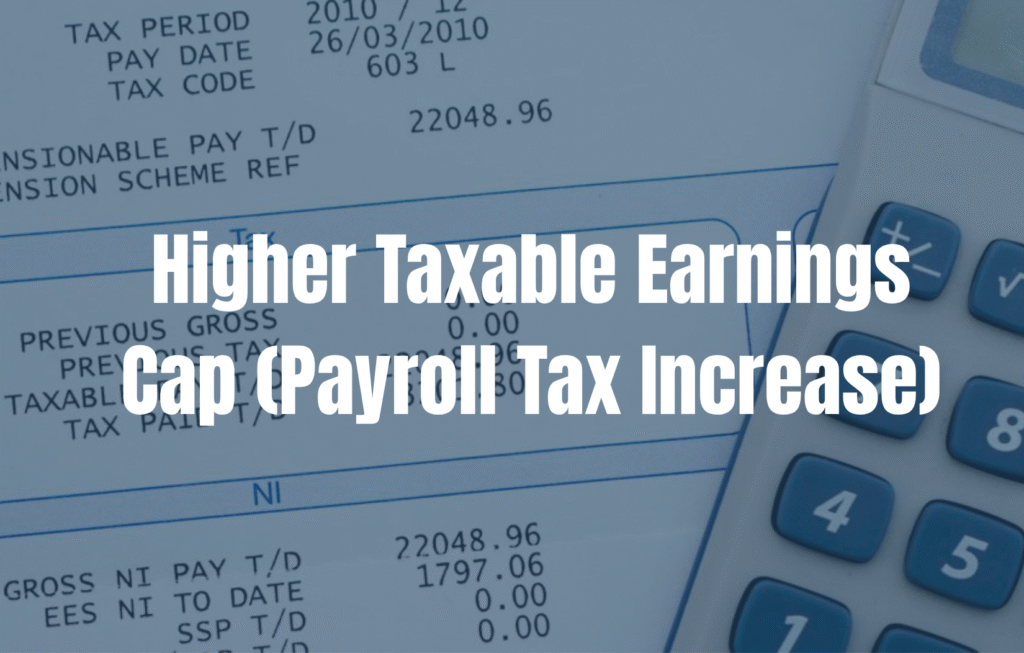Introduction
From time to time, rumors swirl that Social Security beneficiaries are about to receive a large, sudden boost — figures like $1,650 being tossed around in social media or email chains. In October 2025, one such rumor has surfaced: “$1,650 Social Security Boost.” But is there any truth to it?
In short: No, not in the sense of a flat, across‑the‑board $1,650 payment to everyone. What is real, though, are a number of changes, legislative fixes, and cost-of-living adjustments that could increase the benefit amounts for some recipients — especially those affected by old rules like the Windfall Elimination Provision (WEP) and Government Pension Offset (GPO). But the “$1,650 boost” as a universal payment is a mischaracterization.
This article digs into:
- What is and isn’t changing in Social Security for 2025
- Who benefits from new laws and how
- What actual increases recipients are seeing
- What to watch out for (rumors, delays, changes)
- Guidance on how to check your own benefit
What’s Actually Changing in Social Security for 2025
To understand why rumors like “$1,650 boost” spread, it helps to know what legitimate changes are underway in 2025.
1. The 2025 Cost‑of‑Living Adjustment (COLA)

Every year, Social Security benefits are adjusted for inflation via a Cost‑of-Living Adjustment (COLA). For 2025, the COLA increase has been set at 2.5%.
This means that all Social Security beneficiaries (those receiving retirement, disability, survivor benefits, etc.) see their monthly benefit rise by 2.5% starting in January 2025.
That increase is modest compared to years with higher inflation, so while it gives a boost, it is nowhere near $1,650 extra in a single payment (unless you had an unusually large base benefit, which is rare).
2. The Social Security Fairness Act & Repeal of WEP / GPO
One of the biggest new changes is the Social Security Fairness Act, signed in January 2025 by President Biden.
This Act repealed two provisions that historically reduced Social Security benefits for many recipients who also had pensions from non-Social Security-paying public employment:
- Windfall Elimination Provision (WEP)
- Government Pension Offset (GPO)
The effect: millions of public employees, retirees, teachers, firefighters, and those getting pensions from government work could see their Social Security benefit increase because those punitive provisions are gone.
It’s expected that affected persons may receive retroactive payments to account for what they were underpaid due to WEP/GPO in past years. Some projections suggest that some survivors, spouses, or public workers could see increases of hundreds of dollars per month — but that still doesn’t equate to a blanket $1,650 boost.
In fact, analyses estimate that for people impacted by GPO, the increase might average around $700 per month for those receiving spousal or survivor benefits, plus increases for those under WEP. Thus, some individuals might see substantial jumps in their benefit amounts.
3. Higher Taxable Earnings Cap (Payroll Tax Increase)

Another change: the ceiling on wages subject to Social Security payroll tax is increasing in 2025. The new “wage base” is $176,100 (up from $168,600 in 2024).
This means high earners will contribute more into the system, which may modestly affect future benefit calculations. But it does not translate into a sudden $1,650 windfall.
4. Administrative & Policy Shifts
Additionally, the Social Security Administration (SSA) is undergoing structural changes:
- Cuts to staff and field offices: in 2025, about 7,000 jobs were cut or planned, and some field offices are being closed or consolidated.
- A shift in how identity verification is done: for example, new rules make it harder to change direct deposit info over the phone; some in-person verification may be required.
- Elimination of paper Social Security checks: as of September 30, 2025, paper checks are being phased out. Recipients must use bank deposit or other electronic means.
These changes complicate access and payment logistics but don’t create a $1,650 bonus.
Why the “$1,650 Boost” Rumor Gains Traction
Given the changes above, why does the $1,650 boost myth spread?
- Extrapolation from the repeal of WEP / GPO
Some people affected by GPO / WEP may effectively see benefit bumps in the hundreds of dollars per month, or significant retroactive payments. Some might mischaracterize or exaggerate that into $1,650. - Confusion with retroactive sums
Retroactive pay that covers several past months can aggregate to large sums. But that is not the same as a single new benefit bump of $1,650 for all beneficiaries. - Viral social media / misinformation
Sensational claims spread quickly, especially when tied to “October” or a specific date, causing confusion among older or vulnerable beneficiaries. - Misunderstanding of COLA vs. bonus
Some might interpret the combination of COLA + WEP/GPO repeal as a “boost,” but that’s not a universal $1,650. It’s incremental and selective.
Thus, the “$1,650 in October 2025” claim is more of a distortion or exaggeration than a reality.
Who Could See Significant Increases Under the New Rules
While most beneficiaries will see only modest increases via COLA, the people who might see large jumps are those who:
- Were subject to WEP or GPO reductions in their benefits
- Have public pension income that previously triggered offsets
- Are eligible for retroactive adjustment under the Fairness Act
For them, their monthly payment from January 2024 onward may be recalculated upward, and they may receive lump sum retroactive payments to make up for what they were underpaid.
Still, even in those cases, $1,650 would be an extreme upper bound for many. The actual increase depends on how much the offset had reduced their benefits before.
What Recipients Should Do / Check

If you’re getting Social Security — or expect to — here’s how to determine what you might receive and what to do:
- Log into “my Social Security”
Check your benefit estimate and see if any changes to your benefit due to the Fairness Act or WEP/GPO repeal are already reflected. - Review your benefit history
If you had benefits reduced due to WEP or GPO in past years, you should see an upward adjustment or retroactive payment. - Confirm your payment method
With paper checks being phased out, ensure your direct deposit or electronic payment information is correct in SSA records. - Keep documentation
If you are eligible for a public pension and were subject to offset provisions, keep your pension records, service records, etc. - Monitor SSA announcements
The Social Security Administration will publish detailed guidance about implementation, retroactive pay, processing timelines, etc. - Be patient with delays
Because of staff cuts, policy changes, and retroactive adjustments, many will face delays in processing or accurate recalculation.
What Won’t Happen: Why $1,650 for Everyone Is Not Realistic
To be clear: a flat $1,650 boost to all beneficiaries in October 2025 is not happening, because:
- Budget constraints & trust fund limits — Social Security’s funding structure and long-term financial pressures prevent massive one-time payouts to everyone.
- Legal / legislative limits — Any significant change must be passed by Congress, not unilaterally assigned.
- New laws apply retroactively or selectively — Changes like the repeal of WEP/GPO only affect certain subsets of beneficiaries who were previously penalized.
- COLA increases are modest — 2.5% is essentially inflation adjustment, not a big bonus.
In short, most beneficiaries will see only modest increases via COLA, and only some individuals will see significant increases due to the new law.
Example Scenarios
To illustrate, here are sample cases of what someone actually might see:
- Retiree with no public pension impact
Suppose your monthly benefit was $1,500. With a 2.5% COLA, that becomes $1,537.50. No $1,650 bump. - Retired public teacher previously subject to GPO
Suppose your benefit was reduced by $500 due to GPO. With repeal, your benefit might increase by that $500 plus COLA, boosting your monthly payout significantly. But likely not $1,650 extra just in one go. - Widow / widower receiving spousal benefit under GPO
You may see a more substantial jump because GPO often hit spousal beneficiaries hard. Depending on how much you were reduced, the bump plus COLA could be several hundred extra.
Key Reminders & Warnings
- Don’t fall for scams — These kinds of rumors are often used to trick vulnerable people into providing personal info or “upgrading” accounts. Always verify via official SSA sources or local SSA offices.
- Retroactive payments may take time — Many increases will need careful recalculations by SSA staff already under strain.
- Benefit statements may lag — Some enhancements may not appear in your online benefit calculation immediately.
- Policy shifts can still change — Although the Fairness Act is passed, implementation details and timing might evolve.
Conclusion: The Real Story
- The idea of a $1,650 “Social Security boost” in October 2025 is a distortion. There is no universal one‑time payment of that amount.
- What is real are modest increases via a 2.5% COLA, and significant adjustments for those previously impacted by WEP or GPO.
- The Social Security Fairness Act repealed those offset provisions, which means many affected public sector beneficiaries will see benefit increases and retroactive payments.
- Changes in 2025 also include higher taxable wage caps, administrative restructuring, and the end of paper checks.
- To know how much you will be affected, check your SSA account, review your benefit history, and watch official SSA announcements.
FAQs
1. Is there a $1,650 Social Security boost in October 2025?
No, there’s no across-the-board $1,650 payment. Some beneficiaries may see increases due to COLA or WEP/GPO repeal, but not everyone will get this amount.
2. What is the 2025 Social Security COLA increase?
The 2025 COLA is 2.5%, which means all Social Security benefits will increase modestly from January 2025 to adjust for inflation.
3. Who qualifies for larger benefit increases in 2025?
Public workers previously affected by WEP or GPO provisions may see larger benefit increases or retroactive adjustments due to the Social Security Fairness Act repeal.
